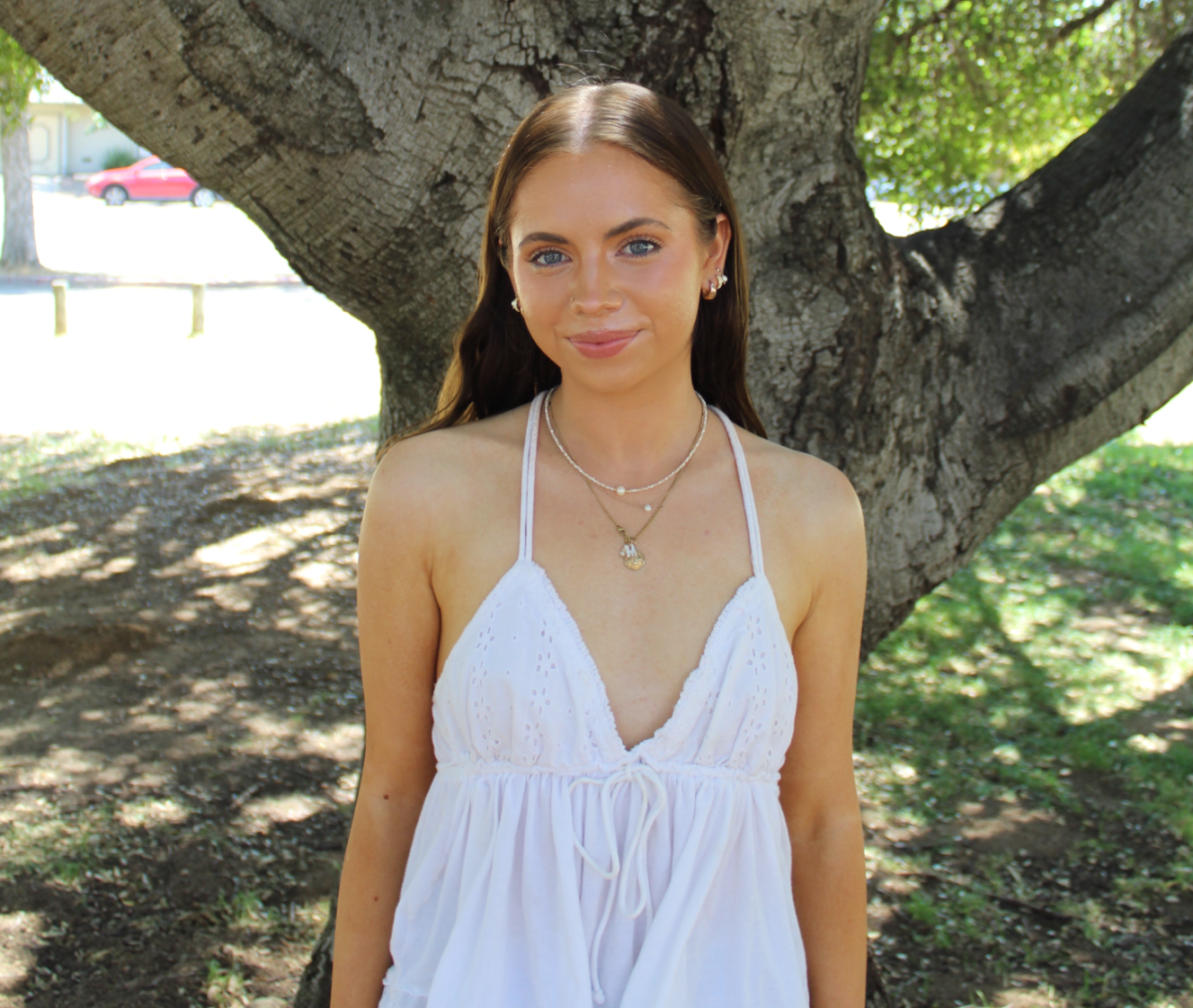By Emma Robertson and Anja Damazyn

Firefighters came from all over, including, Nevada, Canada, Washington and even Australia.
With at least 5,700 buildings destroyed in Northern California, many were affected by this horrible phenomenon, including a large portion of teachers throughout Novato Unified School District.
Green woke up to his phone filled with missed notifications of texts and calls.
“One was from an old friend who works as a firefighter and lives close to Tahoe. When he said that he was around the corner from my house fighting fires, I was really confused,” Green said.
At first, he had thought that his house was not in danger of the fire and that it would be controlled for the most part, until his friend again alerted him, warning him that it was one of the biggest and most erratic fires he had ever witnessed. He found that three of his close friends lost their homes, and his nephew’s great aunt lost her life in an attempt to escape the fire.
At this point, Green gathered a few belongings and left with his wife, daughter and cats.
“We weren’t sure whether we were going to go north or south because we didn’t have enough information. Internet and cell reception was so bad that we couldn’t find out how big the fire was, other than seeing the evacuation line in the city,” Green said.
In the end, he and his family drove to teachers Sara and Dennis Davis’ house in Petaluma. The normally fifteen minute drive ended up taking an hour.
At 12:30 AM on Monday, October 10, San Marin math teacher, Susan Taggard, and her husband woke up to the smell of smoke. When the power went out, Taggard went outside and one hundred yards away was a house on fire. Seven fire trucks surrounded the house next to Santa Rosa Creek, doing all that they could to put out the fire, which is believed to have started from a flying ember.
“I began to hear things blowing up, lights popping everywhere.” Taggard said.
Fortunately, Taggard’s house did not burn down and she never had to evacuate. She explained that some of her relatives were also involved in the fires, one of whom attended Cardinal Newman High School, which burnt down. Classes picked back up on October 24, and each grade is attending school at a different location.
“I am sick for them,” Taggard said, shaking as she talked about the fires.
After the fires began to dominate areas such as Santa Rosa, Napa and Sonoma, Novato became a safe haven for many evacuees and people who lost their homes. An especially large number of churches provided shelter, food, clothing and other necessary supplies.
Many evacuees were fortunate enough to have family and friends who welcomed them into their home. Senior Emily O’Brien housed four of her relatives from Rohnert Park, along with their two dogs and cat. The family woke up to the smell of smoke, grabbed their belongings, then drove to O’Brien’s house in Novato. They saw on the news that parts of their neighborhood had been affected, then later drove to their property and discovered that their house had burnt down. O’Brien said that at times, the family pretended like it had never happened and tried to make things normal.
“They would randomly seem really stressed out and were on edge. They became worried that the fires would reach Novato and were protective of my house.” O’Brien said.
They family advised that the O’Briens’ pack up incase anything happened, which only ended up making everyone more stressed.
Senior Katie Raffini has family in Napa, all of whom had to evacuate. Her grandparents, aunt, uncle, and six cousins stayed with her for a week. Raffini explained that her father was house sitting the night the fires began and woke up to a wall of fire coming down the hill towards the house.
“He grabbed as much as he could and went around the neighborhood, banging on all of the doors” Raffini said. “He’s a firefighter so he knew what to do in the situation.”
New Life, a church on South Novato Boulevard, took many people in, and so there were many members of the community, other than students and staff, willing to help. Churchgoers Patty and Billy Campbell saw this opportunity.
“We went to Costco and bought supplies to feed dinner to a neighboring shelter where 80 people were. There was a pile of donated bags already, so I started sorting and organizing the items,” Patty said.
For three days, the Campbells continued volunteering. They cooked, bought supplies, oversaw other volunteers and brought extra supplies to shelters in Napa and Santa Rosa.
“It felt so surreal and sad to see on TV all of the neighborhoods and cities that were devastated! It made me hug my family tighter and be more grateful for them,” Patty said.
The fires were fueled by hurricane force winds, the highest of which were reported to be 79 mph in Sonoma County. The cause of the fires is still up in the air, but PG&E is a prime suspect.
“When the fires began, local fire crews were called to at least ten different locations along Pacific Gas & Electric’s power lines after 911 calls reported sparking wires and other problems,” Zoe Schlanger said in an article in the Quartz.
By law, PG&E power lines are supposed to be able to withstand winds of at least 56 mph.
As the fires grew, the air quality worsened. In Novato, the air quality index reached 235, which is classified as very unhealthy. Many students wore masks, and some even stayed home. According to Jeanie Olian in the attendance office, the first two days after the fires began, over two hundred students at San Marin did not attend school, and there were still over one hundred students that did not attend the following days.
After consultation with the school board, county and district administrators and staff, Superintendent Jim Hogeboom made the decision to close all NUSD schools and the district office on October 13.
Aside from the one day cancelled, Hogeboom received feedback early in the first week of the fires from students and parents. About half of the parents thanked him, while the other half argued that it was not safe, due to the poor air quality and the fires in general.
“Closing schools is a very big deal, and it puts a great hardship on parents who do not have childcare for their students,” Hogeboom said. “Parents expect schools to be open and expect us to take care of their kids.”
Hogeboom soon realized that canceling school on Friday was the best decision, in order to give staff and students a chance to catch their breath.
However, during this day off, many students and members of the community did not stay home or socialize with friends, but helped the evacuees, including the teachers and staff. Many people contributed, whether it was volunteering at shelters or donating items, and many centers began turning away helpers and began asking for gift card donations instead of clothes and other household items.
Sophomore Sarah Newman volunteered at the Petaluma Fairgrounds. She helped to separate women’s clothes by size and types of clothing, and was required to wear a mask and rubber gloves.
Newman had wanted to help because she knew the victims of the fire were experiencing something horrific.
“I think that when I saw people’s cars packed full and people living in tents, that shocked me the most,” Newman said.





































![Debbie Brown, senior Katie Raffaini's stepmom, examines the remains of her former home. [Katie Raffaini]](http://smhsponyexpress.org/wp-content/uploads/2017/12/fire-photo-c-1-900x1200.jpg)

